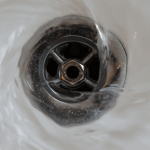Bathroom Door Swings: Which Way Should Yours Open?
A bathroom door serves more than just privacy. It plays a part in safety, accessibility, and how space functions in a room. Whether in a home, a business, or a public facility, choosing the right door swing matters.
Inward or Outward: What Makes Sense?
Most residential bathroom doors swing inward. It keeps hallways clear and prevents the door from blocking traffic. It also offers more privacy. But this isn’t always the best or safest choice, especially in commercial spaces or accessible bathrooms.
When thinking about which way bathroom doors should swing, several factors come into play:
- Room size
- Furniture or fixture placement
- Building codes
- Safety and accessibility standards
A door that opens out can help with emergency exits. If someone collapses inside, responders can open the door without obstruction. For this reason, some businesses and public restrooms design bathroom doors to swing out.
ADA Compliance and Door Swinging
The Americans with Disabilities Act (ADA) sets clear rules for accessible restrooms. These rules focus on door placement, clearance, and swing direction to make bathrooms easier to use for people with mobility devices.
So, should an ADA bathroom door swing in or out? It depends. If the door swings into the bathroom, there must be enough clear floor space for a wheelchair to enter and turn. Often, it’s easier to meet ADA guidelines when the door swings out. That way, the turning radius stays free inside.
Understanding the handling of ADA bathroom doors is critical during installation. The door must not block access to essential features like toilets or sinks. It must also not require tight turns or awkward maneuvers.
What the Experts Say
According to Commercial Locks and Doors, the best practice is to base door swing on both traffic flow and compliance. They recommend outward-swinging doors for ADA bathrooms whenever possible. It’s safer and meets the code more easily.
Additionally, commercial facilities should consider the following:
- Emergency egress
- Automatic door closers
- Lever-style handles
These small details ensure both compliance and convenience.
Making the Right Choice
In homes, space often dictates door direction. Small powder rooms may not allow for an inward swing. In contrast, larger master baths usually do. Homeowners should also think ahead. Aging in place, guests with mobility aids, or future buyers could all benefit from accessible design.
For businesses, ADA bathroom doors must meet federal standards. Always review local codes, too. They may require even stricter guidelines. Work with a licensed contractor familiar with accessibility standards to ensure compliance and safety.
Conclusion
A bathroom door is more than a slab of wood. It influences how space feels, who can use it, and how well it serves its purpose. Choose the swing that aligns with safety, code, and comfort.














